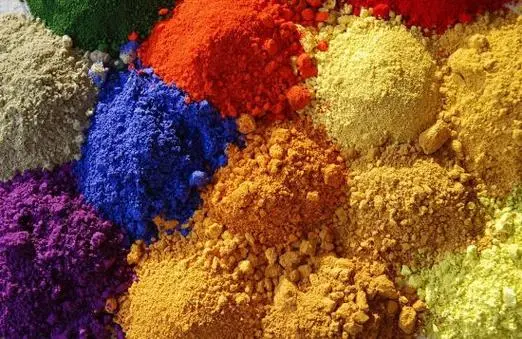Properties of pigments/dyes
1. Color of pigment: It is the result of selective absorption of white light components by pigments. The physical properties of pigments, such as dispersibility, affect color to a certain extent because the degree of dispersion affects the reflection conditions of pigments. Generally, the smaller the particle size, the darker the color tone, and the greater the brightness.
2. Covering power: The pigment in the paint film can cover the surface that bears the film, which is its ability not to be exposed through the film.

3. Coloring power: The ability to form a strong or weak color when one color is mixed with another color. If the coloring power is strong, the amount used will be small.
4. Oil absorption: The size of pigment oil absorption material is related to the degree of dispersion, but it is not determined solely by the degree of dispersion.
5. Particle size: It not only determines the characteristics of the pigment, but also determines the quality of the coating.
6. Light resistance: Pigments undergo varying degrees of color change under the action of light.
7. Powdering: After a certain period of exposure to sunlight, the film-forming substances in the coating are damaged, and the pigments on the surface cannot continue to remain firmly in the coating. They detach from the coating and form a powder layer that can be wiped off or rinsed off with water. This phenomenon is called pulverization.
8. Organizational composition
9. Moisture: Pigments with high moisture content often cause many problems with the coating.
10. Heat resistance
11. Solvent resistance
12. Acid and alkali resistance
13. Relative density and specific volume

